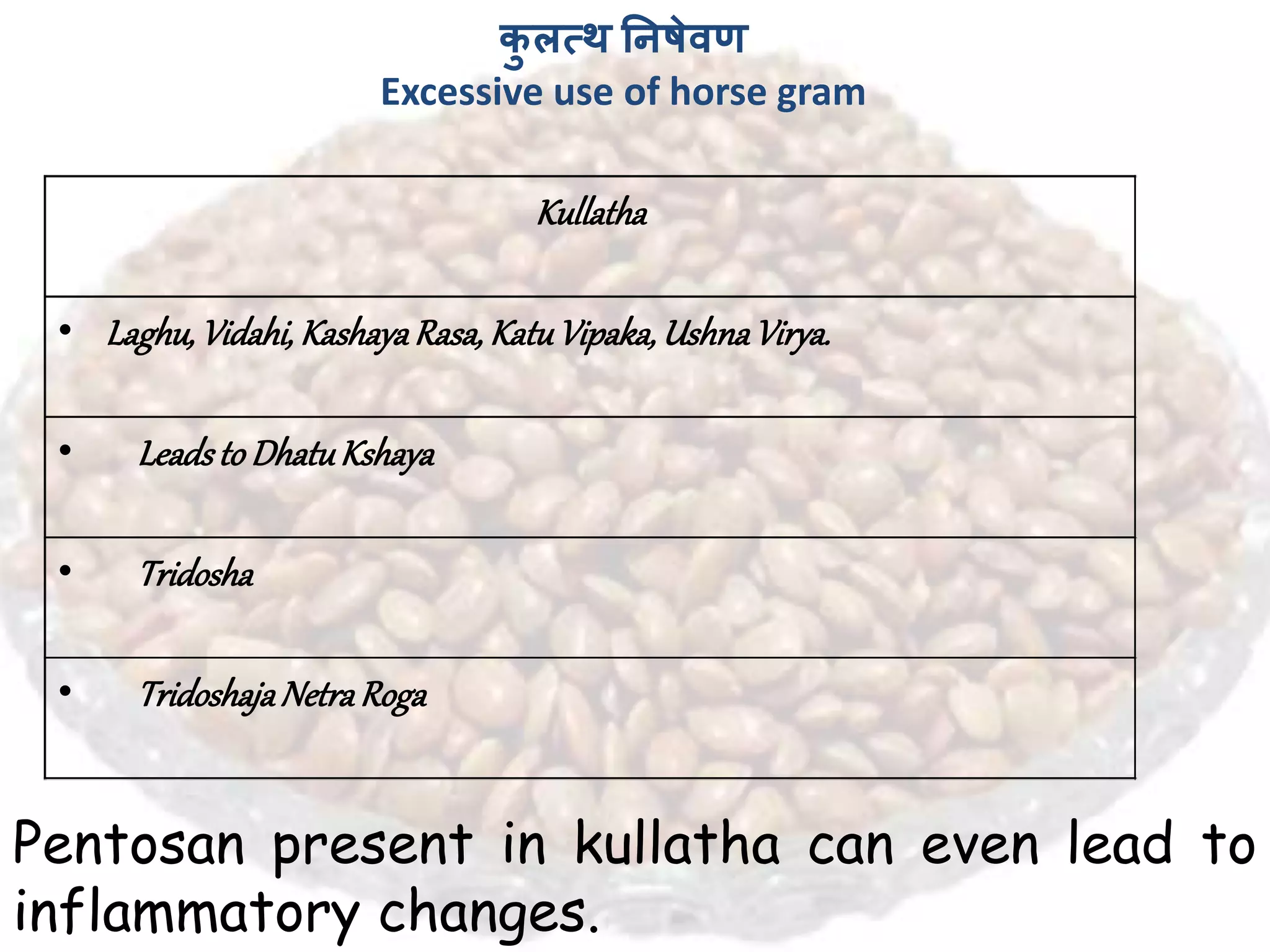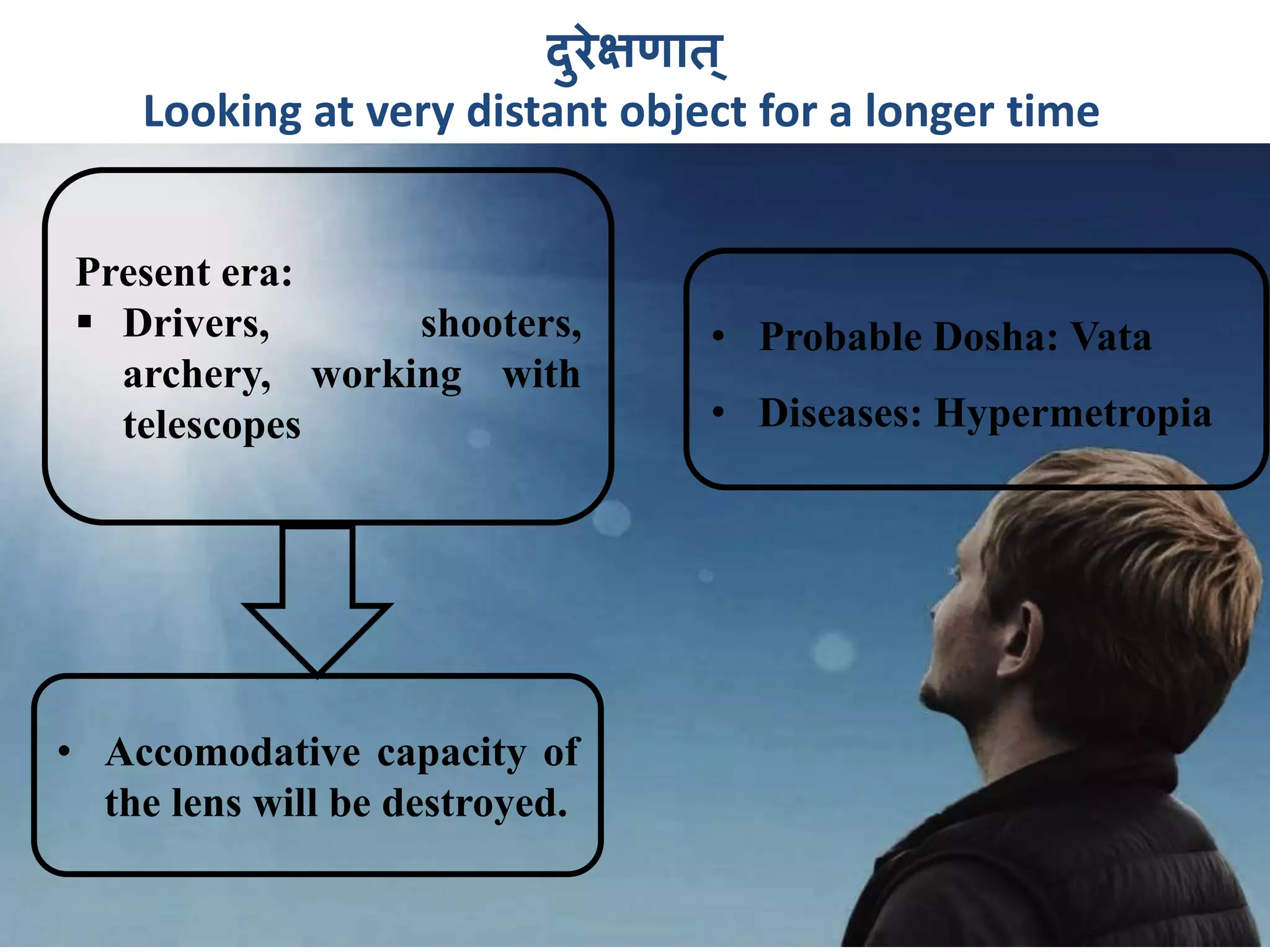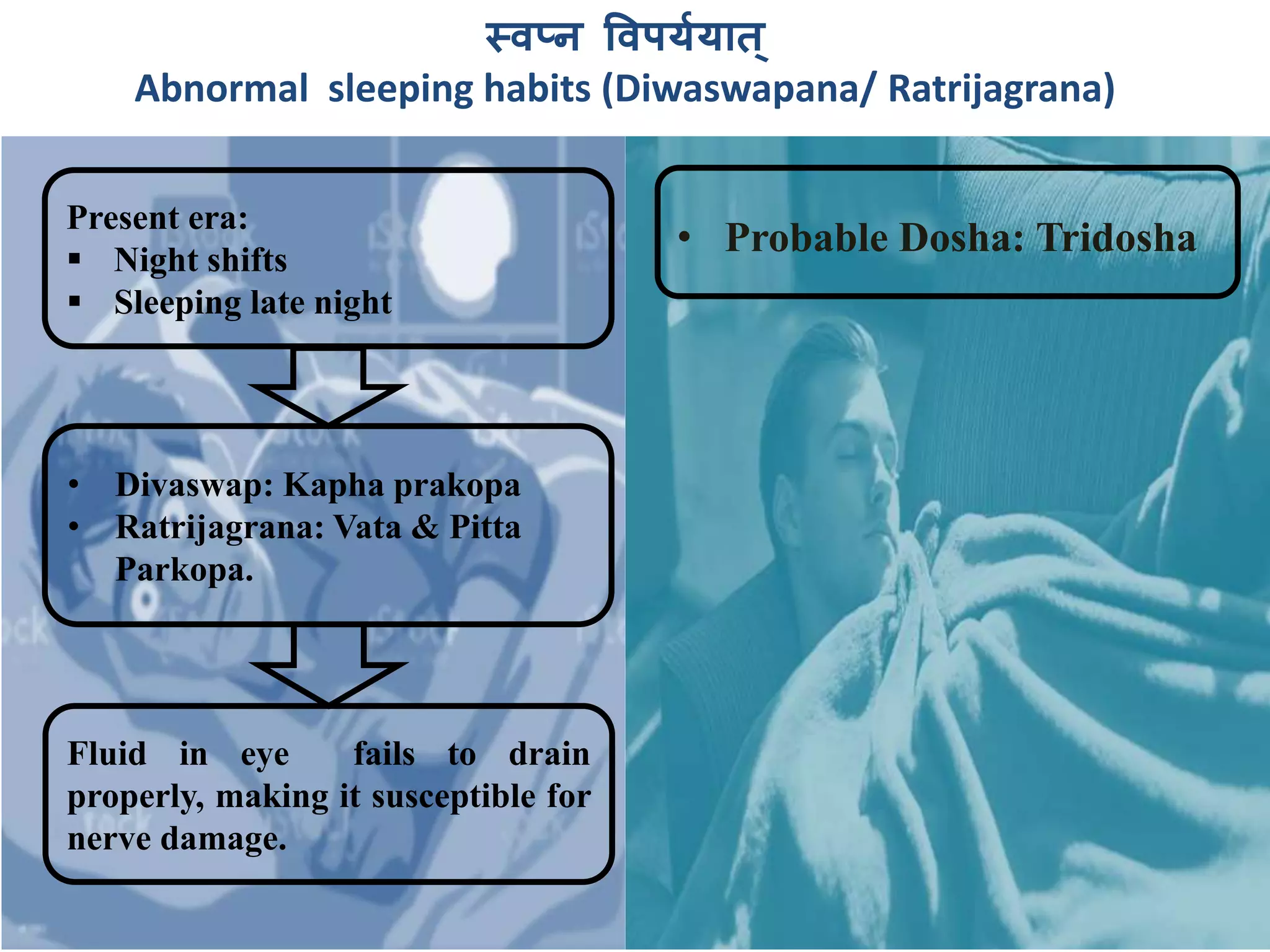This document discusses the nidanas (causes) of eye diseases according to Ayurvedic classics. It groups the nidanas into several categories - Aharaja (diet-related), Viharaja (lifestyle-related), Rutu Viparyaya (seasonal changes), Manasika (mental), and others. Specific nidanas mentioned include intake of spicy, sour, or fermented foods; excessive alcohol; trauma; excessive reading, driving, or sex; and fatigue. Understanding the nidanas is important for assessing dosha vitiation, prognosis, pathogenesis, and treatment planning for eye diseases.









































































